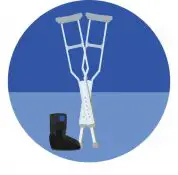Broken Toe: Causes, Symptoms, Treatments & Recovery
A broken toe injury is relatively common and can be incredibly painful while it heals. Interestingly, a broken toe is also known as a toe fracture in the medical field. If you live an active lifestyle or are an athletic person who has broken your toe, you likely have many questions.
If you have broken your toe recently, it’s normal to wonder if you will need crutches. In this article, we will address if you need crutches if you have broken your toes. We will also look at some crucial information surrounding this topic, including the causes, the symptoms you may have, the complications, and when you should seek medical care.
What Is A Broken Toe?
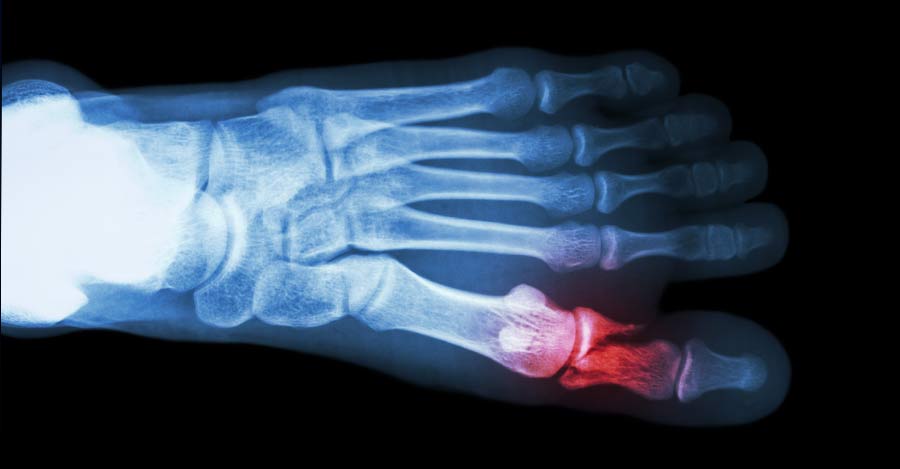
If you have hurt your toe, it’s difficult to determine if it’s a sprain or a break. A broken toe is different from a sprain because when you break your toe, you break one of the bones in it. Your toes have three main bones.
These are the phalanges and two joints. Yet, your big toe only has two bones and a single joint. The phalanges bones are called the proximal bone, the distal bone, and the middle bone. When you injure your toe, you can break any one of these.
There are a few different types of toe breaks. For example, you can have a non-displaced toe break, an open or closed fracture, an avulsion fracture, or a stress fracture.
What Causes A Broken Toe?
When you have hurt yourself, how you have hurt your toe can help identify if you have broken it. However, you need to remember that the amount of pain you are in doesn’t necessarily prove or disprove a toe break. It can be hard to analyze your toe and determine if it is broken when in pain.
There are a few common causes for toe breaks as they are common injuries. One of the biggest causes of a toe break is when something heavy drops on your toe. Another common cause is when you stub your toe against a hard surface.
Yet, these are not the only causes. If you have osteoporosis, you have a higher likelihood of breaking a toe. With this condition, your bones thin out and weaken, which makes them easier to break. Many older people with senile osteoporosis often find this condition to be the cause of their broken toe.
Additionally, if you place excess stress on your feet and thus your toes, you are more susceptible to getting stress fractures. Stress fractures are small minuscule cracks in your bones that can become bigger. These types of fractures are also considered toe breaks.
Usually, people who are very active or that hold athletic professions get stress fractures more often. Yet, those who try to quickly increase their exercise regimes or engage in physical activity after leading a sedentary lifestyle are also likely to get this type of toe break.
What Are The Symptoms Of A Broken Toe?
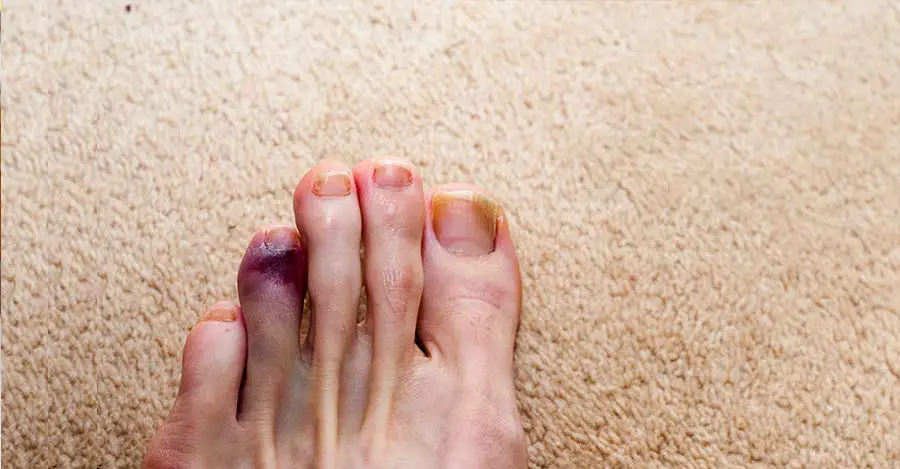
If you haven’t heard the bone in your toe break when you hurt it, it can be difficult to know whether it’s truly broken. Luckily, many different signs could point to you having a broken toe.
One of the first symptoms you could suffer is a throbbing pain in the toe you broke. The pain you feel should be felt in the spot where you suspect you broke it. You might also notice some immediate swelling around the area of your toe that you hurt.
Additionally, if you have broken your toe, you might notice that the skin on your toe is bruising or changing color. Along with this bruising or discoloration, you might also have trouble placing weight on the foot that your toe is on.
Moreover, another indicator that your toe is broken is if you struggle to walk, run or jump. Even standing can be difficult to do with a broken toe. Furthermore, a broken toe can also look dislocated and be resting at an unnatural angle.
What Do I Do When I Have A Broken Toe?
When you suspect you have a broken toe, you need to utilize the rice method. This method will also help you determine if what you suspected was a break was a sprain. Yet, the first thing you need to do is check for the signs that your toe could be broken.
If it’s at an unnatural angle, showing signs of swelling, bruising, or redness, or if it’s difficult to move or walk on, it could be broken, as we mentioned above. After you have had a look at the signs, you can employ the rice method. If this method fails to work, there are a few other things you can try to do.
The rice method stands for rest, ice, compression, and elevation. This method is useful for broken toe injuries and helps manage pain, and helps your injury heal faster. To complete this treatment, all you have to do is rest your toe, ice it in 15 to 20-minute intervals, compress it and elevate it. While completing this treatment option, you can also take anti-inflammatory medication like Ibuprofen to help reduce the swelling faster.
When the rice method fails to work or only works partially, it could mean that you do indeed have a broken bone. Another method you can try before seeing a doctor is taping your toe to an adjacent toe. This will help stabilize your toe and keep it protected while it heals.
Note that this method usually only works on tiny stress fractures. It can also cause a worse injury if you tape your toe incorrectly and cause it to heal while not properly aligned.
When To Seek Medical Care?
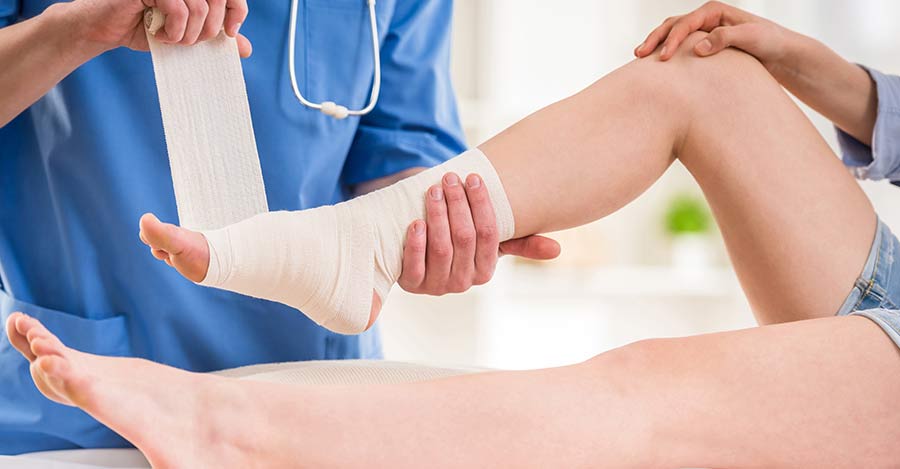
If you have tried to tape your toe or have employed the rice treatment method and your toe is still not healing or tingling or numb, you need to seek medical care. Usually, a good rule of thumb is that you should see a doctor if you can’t walk within a day or two after injuring your toe.
Additionally, if you can see that your toe has a bone sticking out or that it’s misshapen and at an odd angle, you need to see a doctor immediately. Moreover, if the break is on your big toe, you should be more cautious and seek medical care quickly because these breaks tend to be more severe.
After evaluating you, a doctor would confirm if you have broken your toe. They can also prescribe you a treatment plan that is suitable for you. If you don’t treat your broken toe, you can encounter more serious health issues. Some of the treatments your doctor might recommend include the following:
- Antibiotics medication or a tetanus shot to prevent infection.
- A bone setting procedure.
- A surgery where a pin could be put into your foot to align the bones and help them heal.
- A special post-surgery boot or shoe to help quicken the healing process.
Will I Need Crutches For A Broken Toe?
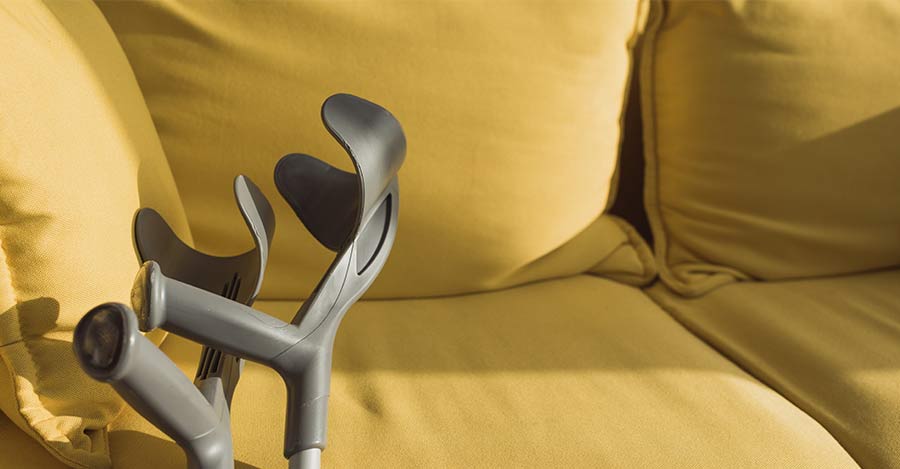
You will find it quite difficult to move around and complete daily activities with a broken toe without crutches. Since you have to limit the amount of time you walk, you need to make sure you can quickly do what you have to do safely. To do this, you need to use crutches.
Ultimately, using crutches will help you heal faster because you will keep your weight off of your injury. There are a few different types of crutches you can use if you have a broken toe. For example, you can use a knee crutch that frees up your hands. You can also use auxiliary or forearm crutches. Yet, they need to be the right height, and they must be able to support your weight.
How Long Does A Broken Toe Take To Heal?

Generally, it takes four to six weeks for a broken toe to heal. Yet, it isn’t uncommon for your toe to still be tender for a few months after the break has healed. For your toe to heal within this time frame, you need to avoid playing sports. You should also avoid excessively walking and running.
When you see a doctor about your broken toe, they can give you a better idea of how long your injury will take to heal. Often a minor fracture or stress fracture will heal faster than a severe or complete break. To help speed up your recovery, your doctor will likely tell you to use a mobility aid. A mobility aid like crutches will help you be mobile a few weeks after you have begun to treat your toe break.
The Complications Of A Broken Toe
Few people realize that complications can arise if they don’t treat their broken toe. Below are a few common complications people suffer from when they don’t treat their injury.
- An infection: If you have a fracture that has broken the skin by your toe, you can get an infection. This is because bacteria can get into the area where the skin is exposed. Some of these infections can be life-threatening. They could also be severe enough to need surgery or amputation.
- A deformity: If you don’t treat your broken toe, you can be left with a permanent deformity. This deformity can create problems when you move the toe or walk. Additionally, it can also end up causing you pain when you wear shoes.
- Long-term pain: Failing to treat your broken toe can lead to you feeling pain in the toe for months or years after the injury first occurred.
Final Words
Now you know that you will need crutches if you want to recover from your broken toe quicker. You also know how to identify if you have a broken toe, the main causes of one, and the symptoms you need to be aware of.
Additionally, you know that seeking medical care is very important. If you leave your injury untreated, you can encounter some severe complications. With the proper care and by taking it easy, you can heal your broken toe quickly and properly. It’s better to use crutches and heal than to try and get back to daily tasks by rushing the healing process unassisted.
